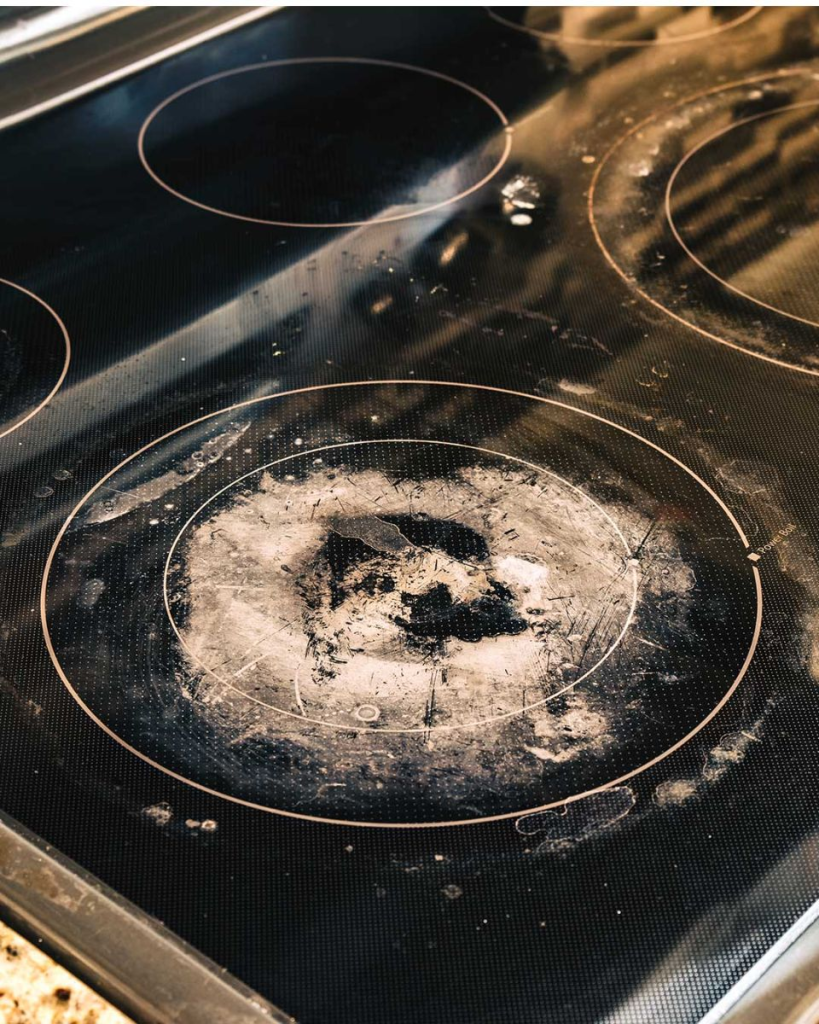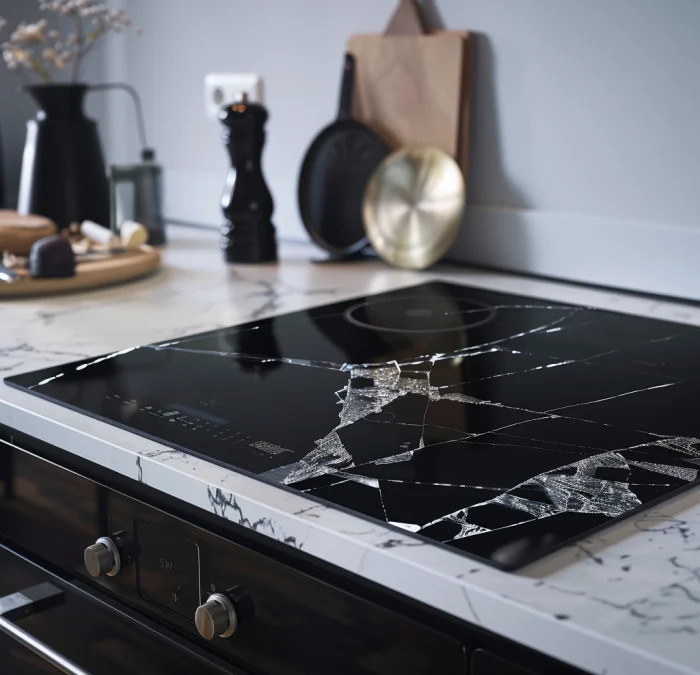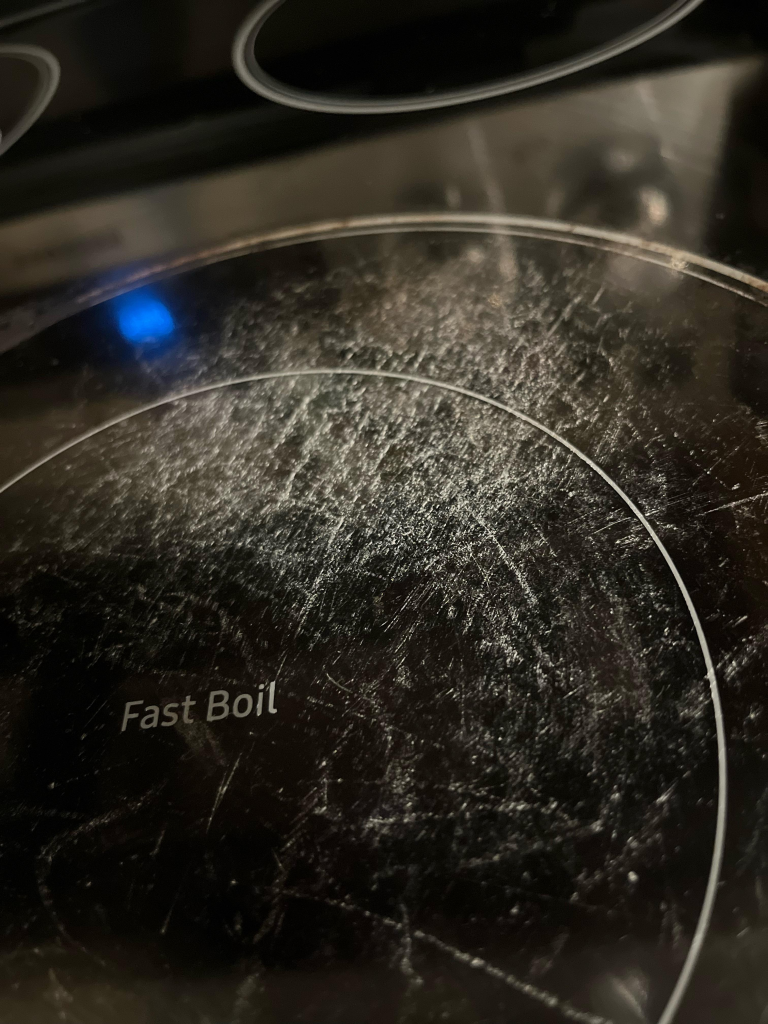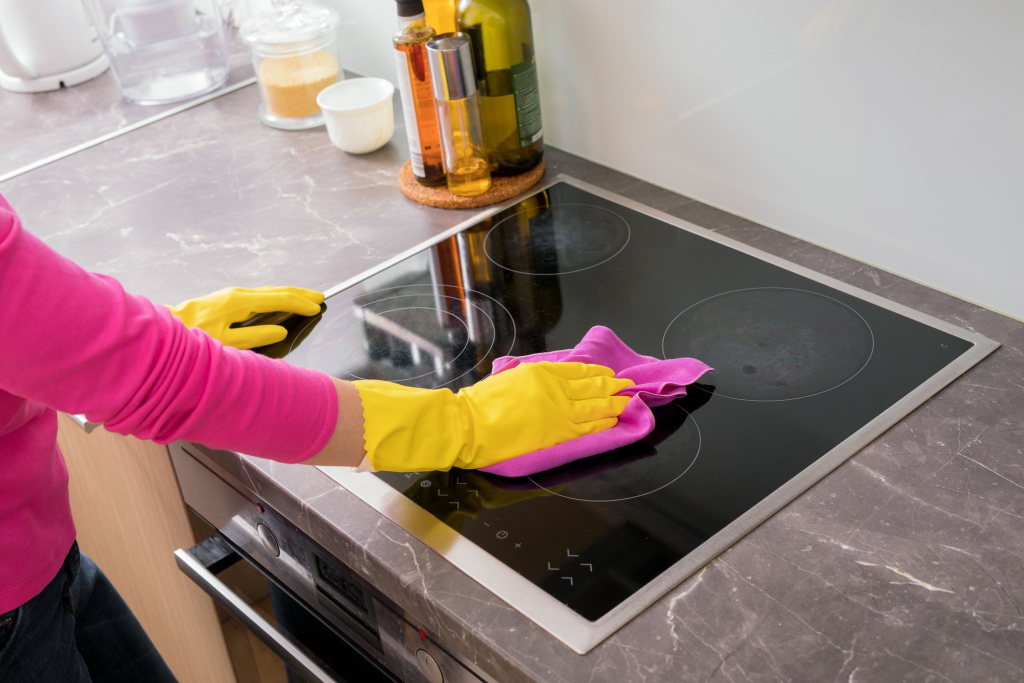Glass stove tops, whether induction or ceramic, have become a staple in modern kitchens. Their sleek design, energy efficiency, and smooth cooking surface make them an attractive choice. However, without proper care, glass stove tops can suffer from scratches, stains, and even cracks. To ensure the longevity of your cooktop, it’s crucial to follow the right cleaning techniques and address any damage promptly.
Let’s explore how to clean, maintain, and repair your glass stove top to keep it looking and working like new.
Identifying Signs of Damage on Your Glass Stove Top

Even with careful use, glass stove tops can develop signs of wear and tear. Some common indicators of damage include:
- Scratches – These can occur from dragging cookware or using abrasive cleaning tools.
- Cracks or Chips – More serious damage that can compromise the structure of the stove top.
- Discoloration and Stains – Persistent marks that regular cleaning won’t remove.
- Uneven Heating – If the stove doesn’t heat evenly or makes unusual noises, it may indicate an internal issue.
Recognizing these signs early allows you to prevent further damage and ensure safe usage.
Assessing the Severity of the Damage
Before deciding whether to repair or replace your stove top, it’s essential to assess the severity of the damage.
- Clean the Surface First – Sometimes, what appears to be a stain or scratch may just be hardened residue that can be removed with proper cleaning.
- Test for Structural Integrity – Light scratches usually don’t affect performance, but deep cracks can pose a serious safety hazard.
- Check for Heating Issues – If the stove is not heating correctly or making unusual noises, it could indicate damage beyond the glass.
For minor damage, DIY solutions can help. However, major cracks or internal malfunctions require professional attention.
When to Consider Professional Repair
Certain types of damage should never be ignored. If you experience any of the following, it’s best to call a professional technician:
- Cracked or Chipped Glass – Even a small crack can expand over time, making the stove unsafe.
- Electrical Issues – If burners fail to heat evenly or don’t turn on, an internal repair may be needed.
- Repeated Malfunctions – If your stove frequently shuts off or has unresponsive controls, professional servicing is necessary.
Attempting DIY repairs on seriously damaged glass can be risky, so consult an expert when in doubt.
DIY Cleaning and Maintenance Tips
Regular maintenance is key to keeping your glass stove top in top condition. Follow these simple cleaning tips:
- Use a soft cloth or sponge with warm soapy water or a specialized glass stove top cleaner.
- Avoid abrasive scrubbers like steel wool, which can create scratches.
- For stubborn stains, make a paste using baking soda and water. Let it sit for a few minutes, then gently wipe it away.
- Wipe up spills immediately to prevent them from burning onto the surface.
- Use a microfiber cloth for a final polish to keep the glass shining.
Consistently cleaning your stove top after every use will help prevent stubborn buildup and discoloration.
Common Mistakes to Avoid When Cleaning Glass Stove Tops

Many people unknowingly damage their glass stove tops with improper cleaning methods. Here are some common mistakes to avoid:
- Using harsh chemicals like ammonia or bleach, which can damage the glass surface.
- Scraping with knives or sharp objects, which can cause deep scratches.
- Applying excessive water, which can seep into electrical components.
- Placing hot lids on the surface, as this can create a vacuum effect and lead to cracking.
By avoiding these mistakes, you can extend the lifespan of your stove top and keep it looking brand new.
How to Safely Repair Minor Damages Yourself
For minor scratches or chips, you can use DIY repair kits available at hardware stores. Here’s how:
Repairing Minor Scratches
- Use a glass stove top polish to buff out light scratches.
- Apply a small amount of polish and use a soft cloth to rub in circular motions.
- Wipe away excess polish with a clean microfiber cloth.
Filling in Small Chips
- Clean the damaged area thoroughly and let it dry.
- Apply a clear epoxy or glass filler to fill the chip.
- Allow it to dry completely before using the stove again.
These simple fixes can help restore minor imperfections, but larger cracks will require professional attention.
Preventive Measures to Protect Your Glass Stove Top

The best way to avoid damage is through prevention. Follow these tips to keep your cooktop in pristine condition:
- Use cookware with smooth, flat bottoms to prevent scratching.
- Lift pots and pans instead of dragging them across the surface.
- Avoid using cast iron or stone cookware, as these can cause deep scratches.
- Invest in stove top covers to protect against accidental damage when not in use.
- Check the bottom of your cookware regularly for rough edges or food residue.
By adopting these simple habits, you can prevent common issues and maintain a flawless glass stove top.
When to Replace Your Induction Stove Top
Despite regular maintenance and repairs, there comes a time when replacement is the best option. Consider replacing your glass stove top if:
- The glass is severely cracked, making it unsafe to use.
- Repairs are more expensive than a replacement unit.
- The stove top is over 10-15 years old and showing frequent malfunctions.
- The heating elements are no longer working efficiently.
If repair costs exceed half the price of a new unit, investing in a replacement may be the smarter choice.
Conclusion: Maintaining a Pristine and Functional Glass Stove Top

A well-maintained glass stove top enhances both your kitchen’s aesthetics and cooking efficiency. By following proper cleaning techniques, handling cookware carefully, and addressing minor damages early, you can extend its lifespan and keep it looking as good as new.
If major damage occurs, always consult a professional to ensure your safety. With the right care, your glass stove top will remain a stylish and functional part of your kitchen for years to come.


